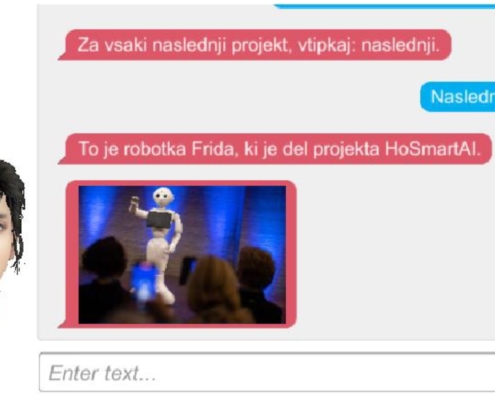Conversational agents
With the development of technology, new communication approaches began to be developed and used. People communicate on a daily basis through instant messaging platforms, such as: Messenger, WhatsApp, SMS, Viber, Instagram, etc. In the context of new man-machine communication methods, a chat solution using virtual conversational agents, also named Chatbot systems, is becoming increasingly useful. Such systems are supported by Artificial Intelligence (AI), which helps to fully automate conversations and make them more and more natural. The chatbot system includes a conversational interface based on natural language processing and machine learning. Virtual agents are available through the various channels we already use on a daily basis. They simulate conversation with the user, are able to understand the text, i.e. speech or both, interact with users and thus simplify and speed up people’s daily activities. They also provide several benefits: 24/7 availability, better data collection capabilities, improved user experience, lower labor costs, etc.
Chatbot systems are software solutions designed to engage with customers in the most natural way possible. The chatbot system simulates and processes human conversation, thus allowing users to interact more naturally even with digital devices, and to communicate as with a real person. They are, therefore, used as a medium for interaction. Tehre are several types of Chatbot based systems: avatars, mobile terminals, customer support, banking systems, chat system, website system, branding system, consumer systems, travel systems, sales systems, sales support systems, education, etc.
Virtual agents (Intelligent Personal Assistants (IPAs)) are online personal assistants who help people with their day-to-day activities, such as managing their email, scheduling meetings, finding locations, providing information globally, and so on. Virtual agents access a variety of information from a variety of sources. IPA understand the user’s intent to provide tailored and meaningful responses. Therefore, they use NLP user interfaces in conversations with the user. The user no longer necessarily clicks on the content itself, but can also use speech. Virtual agents need to have high quality input data, otherwise they cannot provide the best possible answers. Prior to developing a virtual agent, it must be ensured that the datasets are as complete, accurate and up-to-date as possible. Otherwise, users will not have a positive experience with the virtual agent.




















